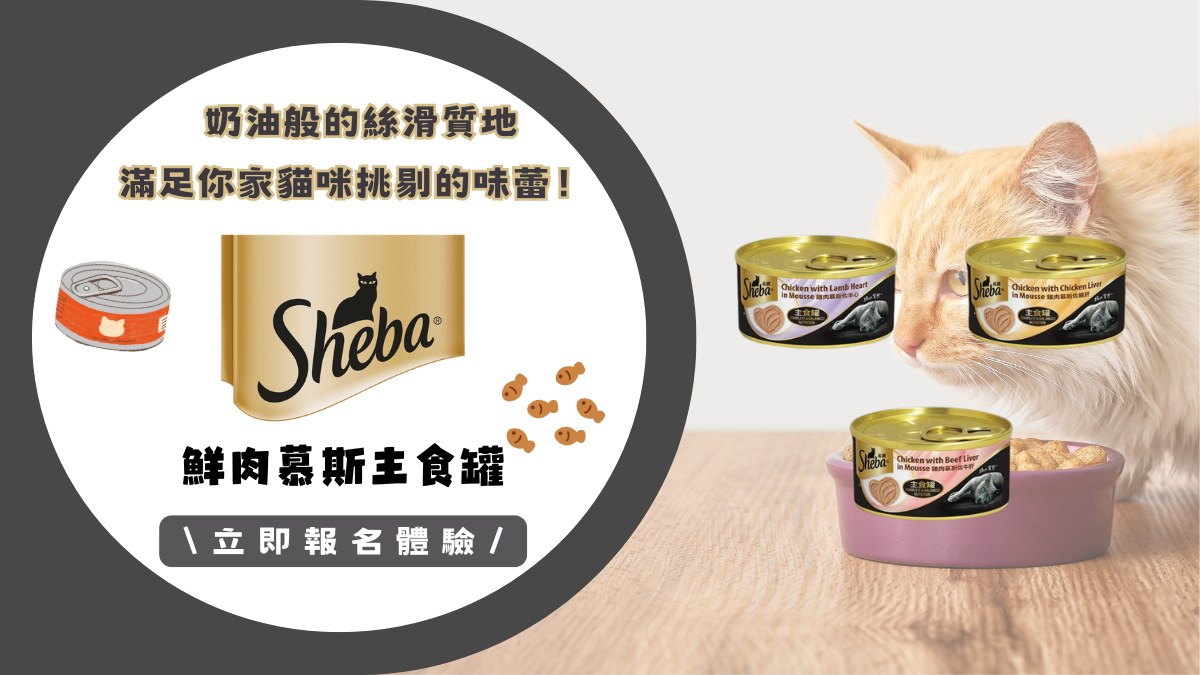佛手柑(Bergamot,Citrus × bergamia)
芸香科(Rutaceae)柑橘屬(Citrus)
學名:Citrus × bergamia
別名:香檸檬

圖:佛手柑(Citrus × bergamia)
西元2千年前的中國古籍便有記載橘子和柚子等柑橘屬水果,3千年前的埃及卡納克神廟(Karnak Temple)被發現早有枸櫞(Citrus medica)的圖樣。柑橘屬在世界上的古文明都享譽盛名,例如:古希臘羅馬、印度、日本、波斯、巴勒斯坦,或是兩河流域、阿拉伯世界和猶太文化等[1]。
英文名bergamot可能是從土耳其語的“beg-a-mudi”而來,意為“王子的梨”,因為畫家Bartolomeo Bimbi為Ferdinand III de Médicis王子所繪的Citrus, 1715作品中,佛手柑很像畫裡的梨[2];也有一說是源自西班牙城市Berga [3]。佛手柑究竟是由何種柑橘雜交形成,目前仍有爭論,可能是苦橙(Citrus × aurantium)×檸檬(Citrus × limon)、苦橙×青檸(Citrus × aurantifolia) [4]或苦橙×枸櫞[5-6]。直到16世紀中葉,對佛手柑的認知也僅是在托斯卡尼(Tuscany)的一種觀賞植物而已。90%的佛手柑精油產自義大利,尤其是卡拉布里亞(Calabria) [7]。雜交起源可能就在卡拉布里亞或義大利南方[2],但也有其他說法認為不在義大利,而是希臘、加那利群島(Canary Islands)或安地列斯群島(Antilles)發生雜交後,才被帶到卡拉布里亞,佛手柑似乎對風土條件極為敏感,所以主要產區一直限縮在卡拉布里亞[8]。
佛手柑能再細分4類:一般(Common)、Melarosa (平果)、Torulosa(稜果)和Piccola(矮化種)。只有一般佛手柑有萃取精油的商業價值,此類又包含3品種:Castagnaro,精油最少,香氣稍差;Femminello,較小株,精油不多但香氣佳,評價較高;Inserto (Fantastico),前2者的雜交種,商業種植漸取代前2者,因為產量最高[8-9]。檸烯以Castagnaro含量最多(39.4%),之後是Inserto (35.03%),Femminello最少(31.10%);Femminello有最高的芳樟醇+乙酸芳樟酯(linalyl acetate)濃度(47.61%),Inserto次之(46.40%),Castagnaro最低(39.40%)[10]。
苦橙和佛手柑精油的價格在柑橘屬水果通常較高,這是因為其他柑橘屬例如:檸檬、橘子、甜橙和葡萄柚,主商品是果汁或蜜餞,精油是副產品,利潤來源不會僅靠精油。而苦橙和佛手柑果汁帶苦味,幾乎沒有市場,反而只有精油一種商品,因此價格在同類精油中較突出[3、11-12]。
【生理活性】
佛手柑在柑橘屬精油中是特別的存在,它不像其他同屬精油含大量單萜類,動輒80-95%的檸烯(limonene)[13],反而擁有高濃度的萜類氧化物,尤其是芳樟醇(2-20%)和乙酸芳樟酯(15-40%)[1]。由於佛手柑精油市場價值相對高,因此從不缺摻混其他柑橘屬的動機;儘管單方精油成分的變異性可歸咎於風土、栽種、收成、製程等因素,不過以檸烯、乙酸芳樟酯、芳樟醇、香檜烯(sabinene)+β-蒎烯(β-pinene)、γ-萜品烯(γ-terpinene)這些成分總計不低於90%為依據可簡易辨別佛手柑精油是否摻假[14]。佛手柑精油的品質參數可參考芳樟醇/乙酸芳樟醇的比值,卡拉布里亞的佛手柑約維持在0.3附近,若是熟果收成,芳樟醇會反應形成乙酸芳樟酯,比值就會往下降[10]。
(Z)-檸烯氧化物((Z)-limonene oxide)、癸醛(decanal)、乙酸芳樟酯、香葉醇(geraniol)和(Z)-β-羅勒烯((Z)-β-ocimene)是貢獻佛手柑氣味的主要分子[15]。
抗菌
佛手柑精油能抑制多種微生物,對肺炎黴漿菌(Mycoplasma pneumonia)、大腸桿菌(Escherichia coli 0157)、金黃色葡萄球菌和李斯特菌的最小抑菌濃度分別為0.5、0.5、1和0.125% (v/v)。果汁可治幽門螺旋桿菌(Helicobacter pylori)感染,最小抑菌濃度在0.625-5.0% (v/v)。[16]
止痛
甲醛(formalin)誘發疼痛前10分鐘於足底皮下注射10 μg的佛手柑精油或5 μg芳樟醇的小鼠[17],在誘發後的30分鐘觀察期間,可明顯壓抑痛感,後續實驗證明止痛功效僅限於注射的周遭局部區域,而非全身性的功效擴散。
保護神經
在大腦動脈堵塞前1小時腹腔注射0.1-0.5 ml/kg佛手柑精油的大鼠,24小時後顯著減少堵塞面積。0.5 ml/kg劑量對於全腦的堵塞皆有明顯改善,尤其是紋狀體內側(medial striatum)和運動皮質區(motor cortex) [18]。
N-methyl-D-aspartate (NMDA)和人類神經瘤母細胞(SH-SY5Y)共同培養時會使細胞死亡,但添加0.0005-0.01%的佛手柑精油能減少細胞死亡,以及避免活性氧物質累積而加速氧化[19]。發揮功效的活性成分可能來自單萜烯烴類(terpene hydrocarbons)。
可能風險
完整的佛手柑精油含有呋喃香豆素(furocoumarins)類成分,例如:bergapten,因此日曬易形成黑色素和光敏性。雖然近年佛手柑精油的相關產品用量不少,但卻沒有聽見副作用事件同等上升,這可能是因為市場上多是已經去除bergapten的佛手柑精油,國際香精香料協會(International Fragrance Association,IFRA)也建議日用品添加佛手柑精油量不宜超過0.4%[1、20]。
【芳療功效】
193位乾癬患者隨機分成2組參與每周3次的結合紫外光UVB和佛手柑精油治療[21],一組在UVB治療前30分鐘先塗佛手柑精油於患部,另一組正常UVB治療,結果2組在治療效果和復發時間上並無明顯差異,但結合佛手柑精油可顯著減少所需UVB光能量和治療時間,結合精油的療程數需10-17次,明顯優於僅有UVB的12-22次。副作用可能有紅斑、搔癢、灼熱和痛感。
誘發疼痛的小鼠在誘發前1小時、後30分鐘或實驗全程[22],分別吸嗅佛手柑精油100、200、400或800 μl,結果誘發後吸嗅400或800 μl精油,以及其他組別皆能有效止痛,且劑量越高效果越好,誘發前和全程吸嗅的效果又優於誘發後。使用的精油來自卡拉布里亞,含檸烯(39.60%)、乙酸芳樟酯(31.09%)和芳樟醇(9.55%)。
40位健康自願者參與試驗[23],實驗組塗抹含真正薰衣草(Lavandula angustifolia) 9.6%和bergaptane-free佛手柑0.4%的複方精油(基底:甜杏仁油)1 mL於下腹部並按摩5分鐘,之後在按摩區覆蓋塑膠膜防止精油揮發持續15分鐘,結果能顯著降低脈搏率(pulse rate)、舒張壓和收縮壓,按摩精油後自覺比較冷靜和放鬆。
42名介於43-85歲的心臟復健病患隨機分成2組[24],實驗組睡眠時放置浸潤含等比率依蘭依蘭(Cananga odorata)、醒目薰衣草(Lavandula x intermedia)和佛手柑複方精油的棉球於床邊連續5天,結果睡眠品質量表顯示,吸嗅複方精油擁有較好的睡眠品質,病患表示夜晚頻尿和覺得太冷的狀況獲得明顯改善。
116名外科手術患者隨機分組[25],術前擴香佛手柑精油30分鐘的患者明顯有較低的等待焦慮,過程中也沒有副作用。41名女性健康自願者處於休息、休息+水蒸氣、休息+水蒸氣+擴香佛手柑精油[26]此3種實驗情境各15分鐘,每種情境間有固定休息時間並檢測生理參數,結果吸嗅佛手柑精油的組別分泌壓力荷爾蒙明顯較少、副交感神經活性增加、能有效改善負面情緒和疲勞並提升活力。使用的精油成分有檸烯(45.45%)、乙酸芳樟酯(23.10%)、γ-萜品烯(8.05%)、β-蒎烯(7.25%)、芳樟醇(6.50%)、α-蒎烯(1.35%)和香葉醇(0.35%)。
不過也是有其他以孩童病患的研究顯示吸嗅佛手柑精油反而較容易焦慮和反胃[27]。
參考文獻:
(1)Valussi, M., Donelli, D., Firenzuoli, F., & Antonelli, M. (2021). Bergamot Oil: Botany, Production, Pharmacology. Encyclopedia, 1(1), 152-176.
(2)Maruca, G., Laghetti, G., Mafrica, R., Turiano, D., & Hammer, K. (2017). The Fascinating History of Bergamot (Citrus bergamia Risso & Poiteau), the Exclusive Essence of Calabria: A Review. J Environ Sci Eng A, 6(1), 22-30.
(3)Navarra, M., Mannucci, C., Delbò, M., & Calapai, G. (2015). Citrus bergamia essential oil: from basic research to clinical application. Frontiers in pharmacology, 6, 36.
(4)Federici, C. T., Roose, M. L., & Scora, R. W. (1998, November). RFLP analysis of the origin of Citrus bergamia, Citrus jambhiri, and Citrus limonia. In First International Citrus Biotechnology Symposium 535 (pp. 55-64).
(5)Nicolosi, E., Deng, Z. N., Gentile, A., La Malfa, S., Continella, G., & Tribulato, E. (2000). Citrus phylogeny and genetic origin of important species as investigated by molecular markers. Theoretical and Applied Genetics, 100(8), 1155-1166.
(6)Li, X., Xie, R., Lu, Z., & Zhou, Z. (2010). The origin of cultivated citrus as inferred from internal transcribed spacer and chloroplast DNA sequence and amplified fragment length polymorphism fingerprints. Journal of the American Society for Horticultural Science, 135(4), 341-350.
(7)Amato, A., Castellotti, T., Gaudio, F., Gaudio, G., Lovecchio, R., Pupo D'Andrea, M. R., & Peluso, R. (2013). L'agricoltura nella Calabria in cifre. 2012.
(8)Dugo, G., & Bonaccorsi, I. (Eds.). (2013). Citrus bergamia: Bergamot and its derivatives. CRC Press.
(9)Orwa C., Mutua A., Kindt R., Jamnadass R., Simons A. Agroforestree Database: A Tree Species Reference and Selection Guide Version 4.0. World Agroforestry Centre ICRAF; Nairobi, KE, USA: 2009. pp. 1–5. Available at: http://www.worldagroforestry.org/treedb2/AFTPDFS/Citrus_bergamia.pdf.
(10)Gioffrè, G., Ursino, D., Labate, M. L. C., & Giuffrè, A. M. (2020). The peel essential oil composition of bergamot fruit (Citrus bergamia, Risso) of Reggio Calabria (Italy): a review. Emirates Journal of Food and Agriculture, 835-845.
(11)Del Bosco, S. F., Abbate, L., Mercati, F., Napoli, E., & Ruberto, G. (2020). Essential Oils in Citrus. In The Citrus Genome (pp. 211-223). Springer, Cham.
(12)Ersus, S., & Cam, M. (2007). Determination of organic acids, total phenolic content, and antioxidant capacity of sour Citrus aurantium fruits. Chemistry of Natural Compounds, 43(5), 607-609.
(13)Dugo, G., & Di Giacomo, A. (Eds.). (2002). Citrus: the genus citrus. CRC Press.
(14)Verzera, A., Lamonica, G., Mondello, L., Trozzi, A., & Dugo, G. (1996). The composition of bergamot oil. Perfumer & flavorist, 21(6), 19-34.
(15)Sawamura, M., Onishi, Y., Ikemoto, J., Tu, N. T. M., & Phi, N. T. L. (2006). Characteristic odour components of bergamot (Citrus bergamia Risso) essential oil. Flavour and fragrance journal, 21(4), 609-615.
(16)Cirmi, S., Bisignano, C., Mandalari, G., & Navarra, M. (2016). Anti‐infective potential of Citrus bergamia Risso et Poiteau (bergamot) derivatives: a systematic review. Phytotherapy Research, 30(9), 1404-1411.
(17)Katsuyama, S., Otowa, A., KAmio, S., Sato, K., Yagi, T., Kishikawa, Y., ... & Nakamura, H. (2015). Effect of plantar subcutaneous administration of bergamot essential oil and linalool on formalin-induced nociceptive behavior in mice. Biomedical research, 36(1), 47-54.
(18)Amantea, D., Fratto, V., Maida, S., Rotiroti, D., Ragusa, S., Nappi, G., ... & Corasaniti, M. T. (2009). Prevention of glutamate accumulation and upregulation of phospho‐akt may account for neuroprotection afforded by bergamot essential oil against brain injury induced by focal cerebral ischemia in rat. International Review of Neurobiology, 85, 389-405.
(19)Corasaniti, M. T., Maiuolo, J., Maida, S., Fratto, V., Navarra, M., Russo, R., ... & Bagetta, G. (2007). Cell signaling pathways in the mechanisms of neuroprotection afforded by bergamot essential oil against NMDA‐induced cell death in vitro. British journal of pharmacology, 151(4), 518-529.
(20)EMA (2011) Assessment report on Citrus bergamia Risso et Poiteau, aetheroleum. European Medicines Agency, Report No. EMA/HMPC/56155/2011
(21)Valkova, S. (2007). UVB phototherapeutic modalities. Comparison of two treatments for chronic plaque psoriasis. Acta Dermatovenerologica Alpina Panonica Et Adriatica, 16(1), 26.
(22)Scuteri, D., Crudo, M., Rombolà, L., Watanabe, C., Mizoguchi, H., Sakurada, S., ... & Bagetta, G. (2018). Antinociceptive effect of inhalation of the essential oil of bergamot in mice. Fitoterapia, 129, 20-24.
(23)Hongratanaworakit, T. (2011). Aroma-therapeutic effects of massage blended essential oils on humans. Natural Product Communications, 6(8), 1934578X1100600838.
(24)McDonnell, B., & Newcomb, P. (2019). Trial of essential oils to improve sleep for patients in cardiac rehabilitation. The Journal of Alternative and Complementary Medicine, 25(12), 1193-1199.
(25)Ni, C. H., Hou, W. H., Kao, C. C., Chang, M. L., Yu, L. F., Wu, C. C., & Chen, C. (2013). The anxiolytic effect of aromatherapy on patients awaiting ambulatory surgery: a randomized controlled trial. Evidence-Based Complementary and Alternative Medicine, 2013.
(26)Watanabe, E., Kuchta, K., Kimura, M., Rauwald, H. W., Kamei, T., & Imanishi, J. (2015). Effects of bergamot (Citrus bergamia (Risso) Wright & Arn.) essential oil aromatherapy on mood states, parasympathetic nervous system activity, and salivary cortisol levels in 41 healthy females. Complementary Medicine Research, 22(1), 43-49.
(27)Ndao, D. H., Ladas, E. J., Cheng, B., Sands, S. A., Snyder, K. T., Garvin Jr, J. H., & Kelly, K. M. (2012). Inhalation aromatherapy in children and adolescents undergoing stem cell infusion: results of a placebo‐controlled double‐blind trial. Psycho‐Oncology, 21(3), 247-254.
圖:Gioffrè, G., Ursino, D., Labate, M. L. C., & Giuffrè, A. M. (2020). The peel essential oil composition of bergamot fruit (Citrus bergamia, Risso) of Reggio Calabria (Italy): a review. Emirates Journal of Food and Agriculture, 835-845.


 留言列表
留言列表


